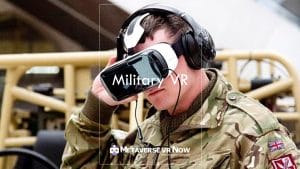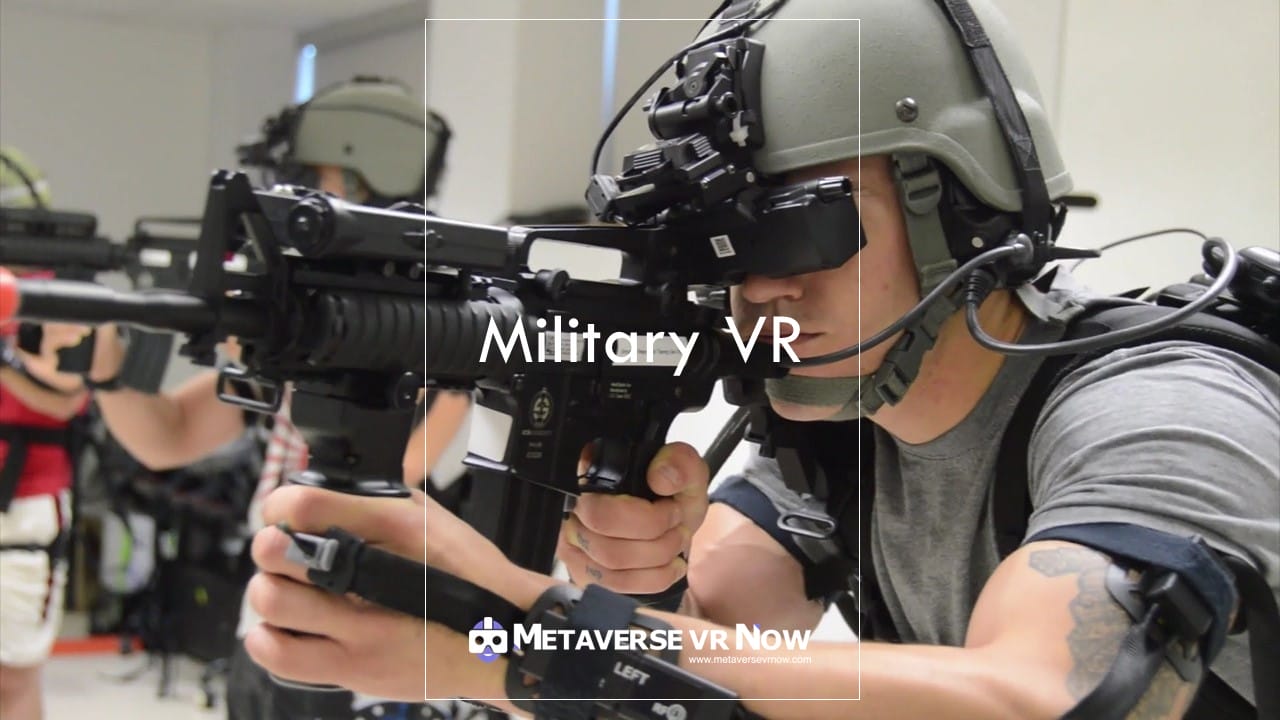Military Virtual Reality is revolutionizing the way we battle the enemies. The use of virtual reality in the military is here!
Military virtual reality has the potential to revolutionize the way we battle our enemies. VR allows soldiers to train for combat in a safe and controlled setting by creating a simulated environment. This can help reduce the number of casualties sustained in real-life engagements. Additionally, VR can improve situational awareness and cooperation between military units. With so many potential benefits, it is no wonder that the US Department of Defense is investing heavily in VR technology.
For several years, virtual reality has been part of the tech tools by the military, airforce, navy, and other warfare defense organizations. It can help train soldiers and prepare them for combat. VR can also help commanders plan rescue training, missions, and operations. VR can provide a realistic experience that can help soldiers better understand what they will be facing in combat and rescue missions.
How Military Virtual Reality performs in actual battle
The military uses virtual reality for many reasons. One reason is for training. VR can be used to create a virtual battlefield for soldiers to train on. This can help them learn how to fight in different situations and environments. VR can also be used to help soldiers prepare for battle.
They can use VR to see what the battlefield will look like and plan their strategy. VR can also be used during battle. Soldiers can wear headsets that allow them to see what is happening around them in the virtual world. This can help them make better decisions while they are fighting.
Training: Simulating real battle scenarios
Simulating real battle scenarios is nothing new for the military. They have been using training simulations for years in order to prepare soldiers for the realities of war. However, with the advent of virtual reality technology, these simulations are becoming more and more realistic.
VR allows soldiers to experience different environments and situations that they might encounter in a real battle, from navigating a treacherous mountain path to engaging in hand-to-hand combat. This allows them to not only become familiar with the terrain and the enemy but also to develop strategies and learn how to respond under pressure. The military has been using VR for training purposes since the early 1990s. Air force pilots were the first beneficiaries of VR technology in the defense industry.
However, in recent years, it has only been that VR has become powerful and affordable enough to be used for other types of training.
Communication: Facilitating better communication between troops
Since soldiers are often present in remote areas, it is essential that they are able to communicate effectively with one another. Military virtual reality (VR) is helping to facilitate better communication between troops.
Military virtual reality allows soldiers to interact with one another in a virtual environment, which can be very helpful in situations where they are unable to meet physically. This technology can also be used to train soldiers for real-world scenarios.
Planning and strategy: Enhancing strategizing abilities
Strategy is one of the most important aspects of warfare, and planning is essential to effectively executing a strategy. The use of virtual reality technology can help improve commanders’ ability to plan operations by allowing them to visualize the battlefield in greater detail.
In addition, it can help commanders better understand the capabilities and limitations of their troops and equipment. VR can also train soldiers and test new tactics and strategies before going to actual battles.
Virtual reality technology extensively helps the defense and military personnels, and its use is likely to continue to increase in the future.
Casualties: Helping medics treat injuries
Casualties are a common occurrence on the battlefield. Military medics have to be prepared to treat any type of injury, from a simple cut to a life-threatening wound. In the past, medics had to rely on their training and experience to treat casualties. But now, they can use virtual reality (VR) simulations to help them prepare for real-world emergencies.
VR simulations allow medics to practice treating casualties in a safe and controlled environment. They can learn how to deal with different types of injuries and how to use the equipment available to them. VR simulations can also help medics develop their teamwork skills, which are essential in a combat situation.
The use of VR simulations has already saved lives on the battlefield. And as VR technology continues to evolve, even more lives will likely be saved through its use.
Advantages of using military virtual reality in battle
Military personnel has been using virtual reality (VR) technology in training for years, but its potential is just starting to unfold in actual battle, especially in the Ukraine-Russia war.
VR has the ability to put troops in dangerous and difficult situations without any real risk, which can help them become better prepared for combat.
It can also help commanders make better decisions by giving them a more accurate view of the battlefield.
And finally, VR can help soldiers recover from traumatic events.
Disadvantages to using VR in battle
Military members have begun to use virtual reality as a way to train for battle, but there are some disadvantages to using VR in this way.
One disadvantage is that the experience can be too real for some people. Some military members have had trouble disconnecting from the virtual reality world and have had nightmares or other psychological issues after using VR for training. Another disadvantage is that VR can be expensive, and not all military members may have access to it.
Finally, some people believe that using VR for training can replace actual experience and training in the field, which could lead to dangerous situations in battle.
The future of military virtual reality
Since the early days of VR, military personnel has been looking for ways to use the technology in training and combat scenarios. And while VR has been used for some training purposes already, its full potential in the military has yet to be realized.
Some of the areas where VR could be most useful in the military include:
Combat training: VR can create incredibly realistic simulated environments, which can train soldiers for real-world combat scenarios.
Recruitment and retention: VR can create realistic virtual simulations of military life, which could attract new recruits and keep current personnel engaged.
Medical training: VR can create lifelike simulations of medical emergencies and procedures, which can help medical personnel train for difficult situations.
Conclusion: How Military Virtual Reality is Changing Battle Tactics
Virtual Reality has been around for a long time, but it has only recently become more widely available to the public. This is largely due to the improvements in technology, which have allowed for VR headsets to be smaller and less expensive. As a result, military personnel can now use VR headsets to train for battle.
One of the benefits of using VR headsets for training is that it allows soldiers to experience dangerous situations without having to put themselves at risk. For example, a soldier can learn how to respond in a situation where they are under fire without actually having to be under fire. This can help them to better prepare for an actual battle situation.
Another benefit of VR headsets for training is that they can help soldiers to improve their coordination and teamwork.

Sources
- Breaking Defense – INTO THE MILITARY METAVERSE: An empty buzzword or a virtual resource for the Pentagon?
- The British Army – British Army Trialling Virtual Reality Training Technology
- US Department of Defense – Virtual, Augmented Reality Are Moving Warfighting Forward
- The Defense Post – US Army Seeking VR Tech for Next-Gen Simulation, Mission Rehearsal
- BBN Times – HOW VIRTUAL REALITY IS TRANSFORMING MILITARY TRAINING
- Virtual Reality Society – Virtual Reality in the Military





